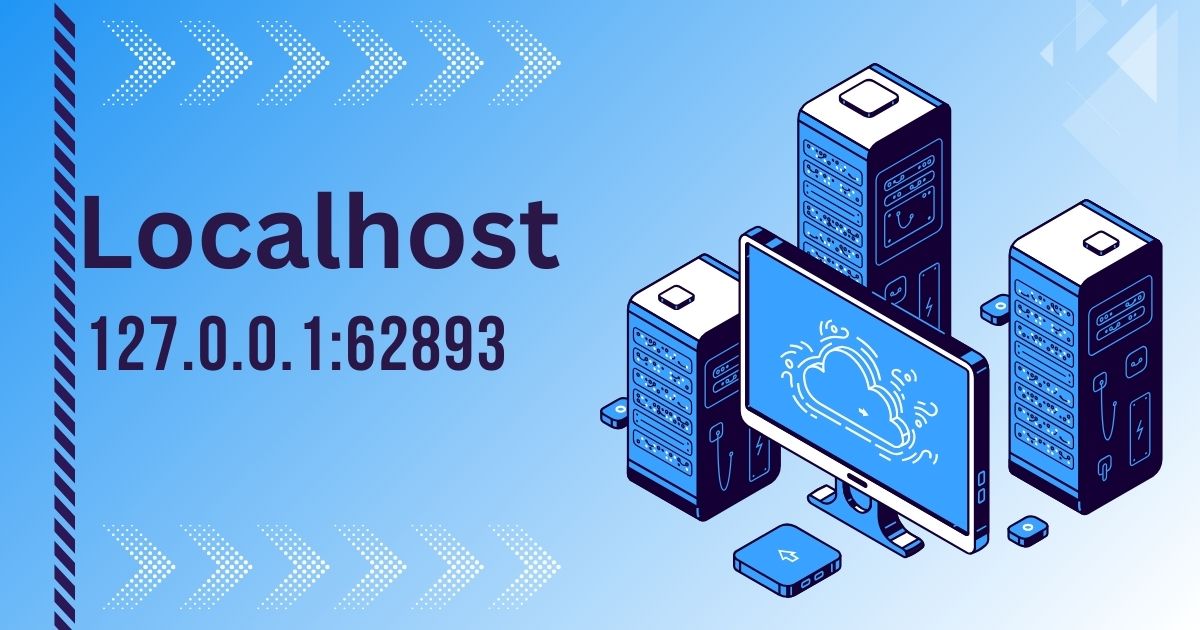127.0.0.1:62893 is a cryptic address that you may encounter on an application or computer. Let’s break this down to understand this number better. This code consists of two components. Namely, a local host that is the numerical sequence 127.0.0.1, and the second one is the port address that is 62893.
- Localhost: One of the popular terms in computer networking and hosting is localhost. And this 127.0.0.1 is an IP address that represents the loopback address. This IP address is a pointer towards itself in a network.
- Port: Ports are specified for handling certain communications on a computer. Different ports are used in different types of applications and services. This is to ease data communication in the smoothest possible way.
How 127.0.0.1:62893 Works
The cryptic address 127.0.0.1:62893 works in a straightforward and effective manner. That facilitates seamless networking and communication. Let’s look at its working in detail:
- It works when a device or an app needs to communicate and pass the signal to another process.
- Looking at the code, it is clear that “localhost” (127.0.0.1) is the destination. This signals that it is intended to communicate with some service available on the same device or application.
- The port number (62893) gives information on which specific service the communication is routed to.
The working of 127.0.0.1:62893 may look simple, but it is very complex and serves various purposes. This cryptic code can be used for networking as well as debugging errors.
Benefits of Using 127.0.0.1:62893
The concept of 127.0.0.1:62893 is very important to understanding various things. Some of them are mentioned below:
- Development and Testing: Software developers use this cryptic code. This is to test server-client interaction, API endpoints or any network related functionality.
- Networking: Localhot and the port are essential for networking. They help in understanding concepts of TCP/IP, sockets, and client-server architecture.
- Security: Activities on specific ports say much about the security of the network. And thus it becomes very crucial to keep a watch on it. Unusual activities in the port show security-related issues. These issues may include threats, breaches, or unauthorized access attempts.
- Debugging: 127.0.0.1:62893 also helps in troubleshooting issues related to traffic or network. Pinpointing errors on a specific port can enable you to fix the issue very easily.
- Isolated Environment: The loopback address enables you to communicate with the local machine. This creates an isolated environment. Enabling you to test and develop without any network interference from outer source. Isolating the port ensures that one application or service doesn’t clash with another. Additionally, it enables many deployments and tests of different services on one machine.
- Speed: Localhost can even help you bypass the network and allow fast feedback. In short, 127.0.0.1:62893 gives a controlled environment for debugging, deployment as well as testing. Moreover, it also ensures speedy, secure, and efficient deployment and troubleshooting.
Troubleshooting “Disconnected from the target VM, address: 127.0.0.1:62893” Error
You might have encountered a “Disconnected from the target VM, address: 127.0.0.1:62893” message. This is an error that occurs while attempting to debug within VS Code. This message says the debugger failed to connect with the target machine on that directed port. But, other errors may also occur based on different software or context.
Before jumping to troubleshooting, first check if the following things are in place:-
- Check if the Service is Running: Make sure that the application or software you are accessing is in proper running state. But, for a web server or deployment tool, check if it started correctly.
- Check Port Number: This Error often arises when the port number is wrong. So verify if the application configuration that uses the 62893 port.
- Check Firewall Settings: Crosscheck the firewall setting. As it can block access to 62893 port and ensure that it is open to local host networking.
Now, let’s fix the Error:
- Starting the Service: In case the service has stopped, start it. While there are commands or scripts to run web servers or development tools.
- Changing Port Numbers: In case of port conflict with another service- try configuring the application to use a different port. You can do this very easily from the application configuration settings.
- Configuring Firewall: In order to enable traffic on the 62893 port, add an exception to your firewall. Follow the process given below:
For Windows:
- Visit Control Panel
- Now go to System and Security
- And click on Windows Defender Firewall
- Next go to Advanced Settings
- Now in Inbound Rules, add a new rule for the 62893 port.
For Mac/Linux:
Use Terminal commands such as iptables to configure the firewall for Linux.
- Check for Application-Specific Configuration: Proper working of some applications requires specific configurations. Refer to the documentation of application to know all settings and configuration properly.
- Use Network Diagnostics Tools: To diagnose if any application is listening on port 62893. To do this, you can use tools such as netstat (Windows) or lsof (Unix/Linux). In case no application is using port, there can be application configuration issues.
In a Nutshell:
127.0.0.1:62893 is a concept that is a concept that is very important in the world of application and development. It is a combination of an IP address that represents the loopback address (local host) and a port address. This cryptic address helps in deployment, testing, networking, security, and debugging. Moreover, it offers an isolated environment and speeds up the development process.
One of the most common errors is “Disconnected from the target VM, address: 127.0.0.1:62893.” In this case, you can troubleshoot it by configuring a firewall and changing the port number. You can also try checking the application configuration or using diagnostic tools.
Also Read About: Bring Scalability and Flexibility with Big Data Sekolahbahasainggris.co.id




